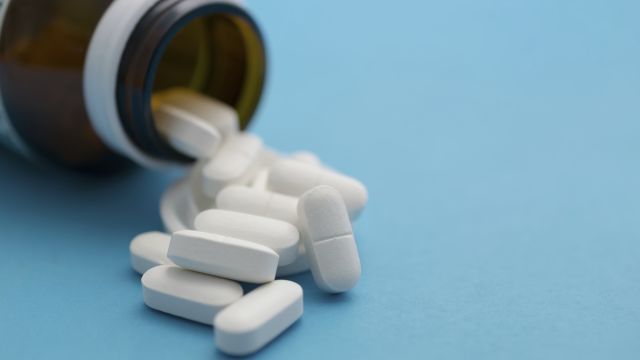Updated on December 4, 2024.
About 19 percent of adults are affected by an anxiety disorder each year in the United States, according to the Anxiety and Depression Association of America. Healthcare providers (HCPs) often prescribe drugs called benzodiazepines to patients to help control their symptoms. Also called “benzos,” these drugs include:
- Lorazepam (Ativan)
- Alprazolam (Xanax)
- Diazepam (Valium)
When taken as prescribed, these drugs can offer temporary relief of anxiety symptoms. But they are often misused, which may lead to overdoses. Illegal benzodiazepines are an important factor in overdose deaths.
Trends in benzodiazepine use
Between 1996 and 2013, prescriptions of benzos filled by adults in the U.S. rose by more than 4 percent. But this trend later reversed. In a 2021 study published in JAMA Network Open, prescription rates for benzodiazepines dropped overall between January 2018 and March 2021.
People don’t always get benzos through prescriptions, however, but instead from friends or family members with prescriptions. And even if their own healthcare provider has prescribed the medication, a person may not always take it as instructed. Both of these situations are referred to as “misuse” of the drug. According to a 2019 study in Psychiatric Services, as many as 17.2 percent of adults who use benzos are misusing them.
Here’s what you need to know about anxiety, benzodiazepines, and how to prevent an overdose.
Anxiety or anxiety disorder?
Anxiety is a catchall term for a variety of disorders, says Yevgeniy Gelfand, MD, a psychiatrist in Charleston, South Carolina. “It’s a spectrum disorder, including everything from panic attacks to excessive worrying to post-traumatic stress disorder to phobias,” he says. “It’s a separate cluster of diagnoses and can coexist with anything else. It’s basically a doctor word for ‘worrying.’”
The difference between normal worrying and an anxiety disorder is that with an anxiety disorder, anxiety is persistent and out of proportion to the perceived threat. Anxiety disorders also disrupt how you function in everyday life.
How benzodiazepines can help—or harm
Benzodiazepines are sedatives and tranquilizers that work quickly to relieve symptoms of anxiety. They are supposed to be prescribed for just a few weeks at the lowest possible dose for severe anxiety or insomnia.
In reality, however, they are often prescribed more liberally and for longer periods than those guidelines suggest. This is a problem, because benzodiazepines are highly addictive. It’s easy to become hooked on their effects, and the body develops a tolerance to the drugs over time.
“These medications are very effective, but only when used appropriately, for a short time and as needed instead of, ‘Oh, I don’t want to deal with this, let me take some meds,’” Dr. Gelfand says. “The underlying problems won’t go away by putting on a Band-Aid, which is what benzodiazepines are. They’re for improving symptoms.”
Deadly combinations
Taking benzodiazepines presents the risk of dependence, or reliance on and use of the drug even after it has begun causing problems. A person may need to take more and more of the drug to get the desired effect.
Withdrawal symptoms are also a risk. This happens when a person who has been regularly taking benzodiazepines stops taking them. Symptoms may include nausea, tremors, panic and anxiety, headaches, heart palpitations, and seizures. For some people, benzodiazepine withdrawal symptoms may last months or years.
As for overdose, taking too much of a benzodiazepine can result in slurred speech, trouble walking steadily, drowsiness, slowed breathing, and an altered level of consciousness. Still, taking benzodiazepines on their own in excess is rarely fatal.
When they can become deadly (aside from withdrawal situations) is if people take them with other drugs with sedative effects, like opioids (including fentanyl) or alcohol. The combination can lead people to become comatose, stop breathing, and die.
Overdose deaths have generally been on the rise over the years, primarily because of the use of illicit fentanyl along with benzodiazepines. A 2021 Centers for Disease Control and Prevention (CDC) study found that of all the benzo-related overdose deaths in the first half of 2020, 92.7 percent involved opioids.
A holistic approach to anxiety treatment
Anxiety treatment is best if it’s holistic and multi-layered. It should ideally include psychotherapy, non-addictive medications, lifestyle changes, and mind-body approaches.
If you suspect you may have an anxiety disorder, it’s wise to reach out to a mental health professional, such as a psychologist. They can help you understand your symptoms and help you work on treatments and healthy ways to cope with anxiety. Some of the treatments they offer might include:
- Cognitive behavioral therapy (CBT), which focuses on changing thought patterns to decrease your symptoms
- Psychotherapy, a collaboration between the patient and the psychologist to understand concerns and develop techniques for dealing with anxiety
- Medications, including some antidepressants that are also useful in treating anxiety, and a particular anti-anxiety medication called Buspirone
Other interventions may include:
- Exercise
- Community integration, such as religious support
- Changes in personal behaviors or the home environment
- Changes to diet, alcohol, or caffeine use
- Journaling
- Creative practices, such as making art
- Addressing underlying physical health problems
Practices such as mindfulness and deep breathing may also be helpful. “The mind can’t focus on many things at once. One thing we can do is bring your awareness to the body,” Gelfand says. “Feel the skin, feel the air brush it, feel the clothes on your skin. Feel yourself inhabit your body.”
Then, switch to focusing on your breath. “Use your belly to push your diaphragm down and cause air to rush into your lungs,” says Gelfand. “That stimulates the vagus nerve. That’s what produces relaxation. It brings out more calmness. We’re not thinking of whatever stressful thing, we’re changing our breathing, making it slower and more efficient. There’s some relief.”
Figuring out what combination works can require trial and error, as everyone is different.
Bottom line, in some people with anxiety disorders, benzodiazepines have a place as short-term treatments. But the drugs can be dangerous, especially if they are taken with other medications that sedate you. They should not be used as a substitute for more lasting, evidence-backed solutions to anxiety disorders.







